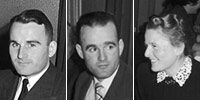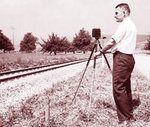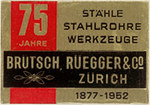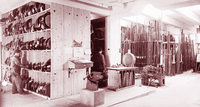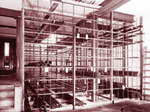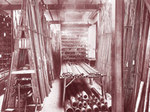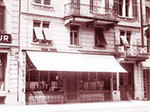1970
Gottfried Rüegger-Koch dies at the age of 80.
1969
Meanwhile the company numbers 120 employees. This generates problems of organizations and structuring, which are being solved gradually. The transition in management style from managing to participating is taking place.
1963
Margarete Rüegger-Koch retires from the company. The children, Julius, Felix and Margrit Rüegger become the third generation of partners.
1962
The tools division takes over the now emptied warehouses at Rautistrasse 19, and now also has generous warehousing space.
1958
Purchase of a site for the planned warehouses at the Regensdorf station, which is where are warehouses are situated to this day.
1957
The post-war period brings the still-intact Swiss economy opportunities for development that could never have been previously imagined. Even our Rautihof steel tube warehouse is running short on space, and is no longer sufficiently efficient. Julius Rüegger takes on the job of searching for a suitable piece of land with a connection to the railway in the surrounding urban areas, inspecting the various options over a period of months.
1947
Felix Rüegger, the second son of Gottfried Rüegger-Koch joins the company. The "Rautihof" central warehouse for steel tubes is built in the Albisrieden area of Zurich, to replace the widely dispersed warehouses in Löwenstrasse/Gessneralle, Sihlquai and Limmatstrasse.
1946
The steel tubes department and tools department become independent business units.
1939
On 1 September, Hitler's tanks invade Poland, and on 2 September the Swiss Federal Council orders a general mobilisation. Any employees called up to active service may not be replaced. Accordingly, Gottfried Rüegger involves his son, Julius, in the business in September 1939. The following 5 years of war brings countless difficulties for our firm, and is a great challenge and test. Thanks to good personal relations with supplying factories, we just about manage to carry on providing our customers with materials which are sometimes in very short supply up to the end of the war in 1945.
1938
Margrit Rüegger, daughter of Gottfried Rüegger jr. joins the company. In June, partner Julius Koch dies. His daughter Margarete Rüegger-Koch, the wife of Gottfried Rüegger-Koch, takes up his share in the firm. Purchase of the neighbouring property in Gessneralle 36, creating a single underground store that goes from Löwenstrasse to Gessneralle.
1935
The company starts to trade in and stock hot-rolled, thick-walled steel tubes. A number of producers fight for a share of the market, driving prices down. At the time of devaluation of the Swiss frank in autumn 1936, these steel tubes can be bought at just 21 rappe per kilogram!
1930
The company Brütsch & Co. changes its name to Brütsch, Rüegger + Co.

